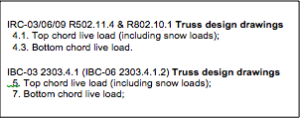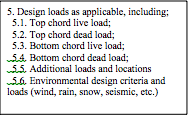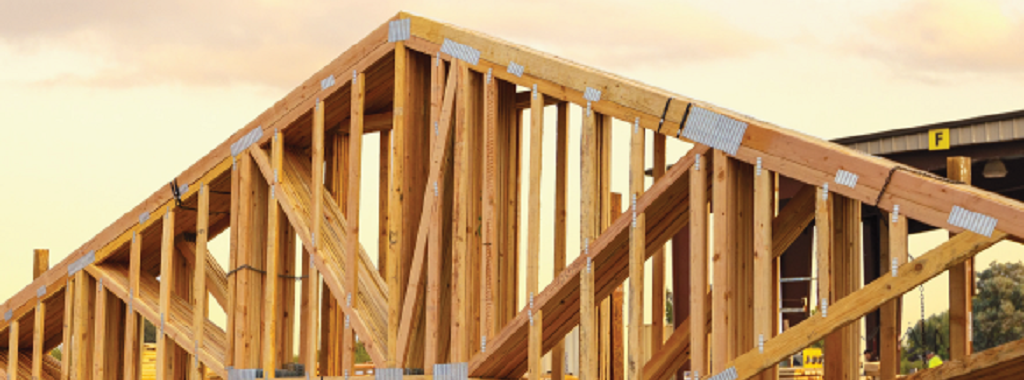In my former life working as a consulting engineer, I reviewed many truss submittal packages. I remember during my reviews wondering how it was possible to get so much information on to an 8½ inch by 11 inch piece of paper. I also remember how a lot of what was being reported was difficult to understand without some help interpreting the information.
As many of you may know, Simpson Strong-Tie has ventured into the truss industry and we are now offering truss connector plates and software to component manufacturers around the country. So given my past experiences, I figure some of you might appreciate some insight into the engineering that goes on behind those truss submittal packages. So I have asked one of our great truss engineers, Kelly Sias, to put together some blog posts on the topic that we can share our knowledge with you. Kelly has worked in the truss industry for years and spent time as the Technical Director at the Truss Plate Institute. I am sure her blog posts are going to help all of us have a better appreciation for trusses.
Have you ever been involved in a discussion with someone on a project that ended with “but that’s the way we’ve always done it!”? I heard those words spoken by a contractor in my first engineering job when I tried explaining why his single stud would not work at a particular location. When he said something about his grandfather having always done it that way, I knew I could explain the calculations all day and it wouldn’t do much good.
Fast forward several years to the present. The topic and audience are different, but the issue is still the same – it’s difficult to change the way something has always been done. Take snow loading on trusses as an example. Historically, snow load has been lumped in as part of the top chord live loading on a truss. A long-standing practice in many areas has been to take the ground snow load and simply enter it into the Top Chord Live Load (TCLL) box in the truss design software. Even the truss design standard, ANSI/TPI 1, and the IRC/IBC codes have included snow load as part of the top chord live load in the list of required design loads to be included on the truss design drawing:

The only problem is that snow load is not a live load, and no additional snow load considerations, such as unbalanced snow loads, are taken into account when it is applied as a live load in the design program.
This may in fact be acceptable at times, particularly when the full ground snow is used as the top chord live load. After all, this is in-line with the prescriptive approach taken in the IRC, as specified in section R301.6 Roof Load:

where Table R301.2.(1) is based on the local ground snow load. In many jurisdictions, the use of the full ground snow load for the balanced snow case is considered adequate to address any other snow-related effects including unbalanced snow loads.
The alternative approach is to treat snow loads as snow loads and live loads as live loads, and actually design the truss for the input snow loads and corresponding snow load design criteria. This puts all of the relevant snow loading parameters right onto the truss design drawing. However, because of the historical precedence to treat snow loads as live loads, this method has actually caused confusion in some Building Departments. Some departments see both a snow load and a live load and get confused by the live load. Some want to see snow load, but only the ground snow load. Others say they want to see a TCLL on the drawing and that’s it. Interestingly, the IBC-09 actually modified its provision regarding truss design drawings to remove snow load from the top chord live load provision and list it separately as part of the environmental loads:

Being from snow country (and actually being a fan of the white stuff every year), I might be a bit biased, but I think the IBC change is a change for the better. Maybe it will help remind people that snow loads are not live loads. I’m not saying that ground snow shouldn’t ever be used as the roof design load; I’m just saying it should still be called (and reported as) a snow load. I think that’s an important first step to making sure everyone in the job is on the same page regarding what snow load considerations have (and have not) been included in the design.
What are your thoughts about snow loads being treated as live loads in the design of roof trusses? Let us know in the comments below.





Nice blog every day in design new topic new changes it is challenging and learning new.
Snow loads and live loads should be differentiated in design. They have different duration factors (load reduction for snow load), deflection limits (less stiff for snow loads), slope reduction factors (for snow loads where allowed by BD), and area reduction factor (only for live loads), to name a few. Where analysis for items like trusses uses software, these items can be incorrectly input and the wrong results produced. A savvy designer who hand calcs can include these, but we are a rare breed.
Live & snow should be separate, clearly listed on contract documents as well as in the design analysis.
Snow loading can be adversely affected by surrounding terrain, obstructions, lack of sun exposure, type of construction, etc.
Live load is simply live load.
Careful consideration of the site-influenced snow loads is essential, both in the initial design and for future reassessments as changes may necessitate.
I concur with Mr. McEntee.
Usually I see TCLL listed and then in brackets (Roof Snow = 25 psf) or some value. The load cases show the unbalanced snow loads though.
If you are really interested in all of the engineering that goes into a truss take a look at the output of the Medeek Truss Designer. I’ve recently updated the fink type truss with most of the plating calcs.
Note that this is only for one load case, in reality there are probably another 20+ possible load cases to consider (DL only, wind loads CC and MWFRS, Balanced snow loads, unbalanced snow loads, snow loads on overhang, DL + attic storage BCLL. This is further complicated by considering the negative and positive internal pressures of the wind loading. Then there is the consideration of end zones where wind load pressure are even higher. Then the factored combinations of loads as given in Sec. 2 of the ASCE 7-10, where combination loads of dead + snow +wind need to be considered. Its no wonder we have programs to do this with. To calculate even one simple truss package by hand would take an engineer a week’s worth of work and a full engineering pad.